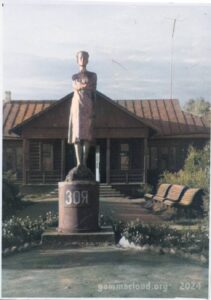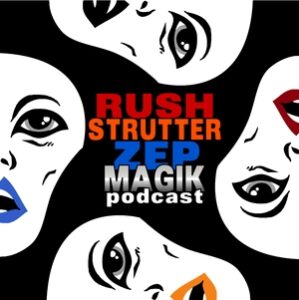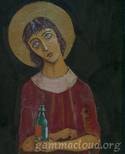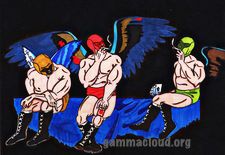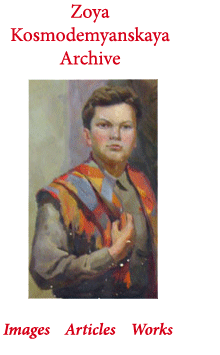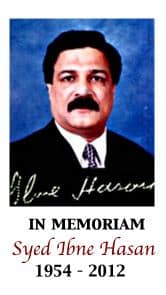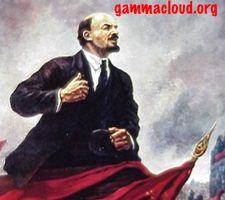“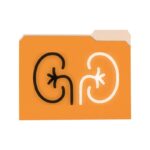 The Orange File” is an irregular series of blog posts through which I am chronicling some of my experiences dealing with a potentially serious kidney issue.
The Orange File” is an irregular series of blog posts through which I am chronicling some of my experiences dealing with a potentially serious kidney issue.
Something odd and unexpected happened shortly after the initial discovery of a large mass on my kidney: I lost almost all interest in (and enthusiasm for) music. This was just one of several abrupt and cruel dimensions of the anxiety and depression that came with receiving life-altering – and possibly life-threatening – news. Music has always been very important to me from a very young age, when my taste in music was based largely on the contents of my parents’ record collection (which included ABBA’s Greatest Hits Vol. 1 & 2, Georgy Girl by The Seekers, and Barry Manilow Live). The first LPs I ever owned were Kenny Rogers Greatest Hits (1978) and K-Tel’s Power Play (1980) and I’d play them on the same Raggedy Ann and Andy record player that I used to listen to my book and record collection.
 Like so many people, music was a soundtrack to my life – In fact, I actually made a series of mix CDs years ago, weaving together the songs and audio clips from my formative years in a collection called “Life in Music.” From amassing a huge collection of records, CDs, videos, and memorabilia to trying my own hand at creating music with a collection of guitars, and even starting a music-themed podcast, Rush Strutter Zep Magik, with some friends, music had been an important passion and past time until everything changed.
Like so many people, music was a soundtrack to my life – In fact, I actually made a series of mix CDs years ago, weaving together the songs and audio clips from my formative years in a collection called “Life in Music.” From amassing a huge collection of records, CDs, videos, and memorabilia to trying my own hand at creating music with a collection of guitars, and even starting a music-themed podcast, Rush Strutter Zep Magik, with some friends, music had been an important passion and past time until everything changed.
I’m okay now. But clear cell Renal Cell Carcinoma (ccRCC) affects tens of thousands of people every year and there is a chance that it could come back for me somewhere down the road, which is why I will be getting regular scans for the rest of my life. A new reality such as this brings everything into question; the less important things melt away quickly and even things we love and cherish suddenly seem frivolous.
So that’s just what happened. All of the sudden, I didn’t want to hear anything that distracted me or reminded me of better times. I didn’t want to hear anything that could make me happy or make me think of anything outside of what I was feeling. Moreover, I felt stupid – that’s really the word I want to use here – for loving and collecting darn near anything, not just music-related stuff, but toys, comics, and books. I felt like I had wasted my life having fun and being happy instead of preparing for something bad to happen. And because of this, I stopped almost everything.
I especially stopped intentionally listening to music. One of the first things I did was to cancel SiriusXM. This actually wasn’t a terrible move because I was tired of it anyway and I’d typically spend most of my commute flipping back and forth between news stations and obsessing over things that I had no control over. Incidentally, if you have SiriusXM and you ever decide to cancel it, make sure you have about 45 minutes and a Bunyanesque amount of patience because it is something of an ordeal.
To replace news and music in my drive time, I started listening to DVDs of old TV shows and cartoons on my DVD player. Gilligan’s Island was the most-played show in my rotation, and I cycled through all three seasons many times over the course of weeks and months. At some point, I became acutely aware that this was exacerbating my feeling that I was stuck in a purgatory of sorts, much like the seven castaways themselves.
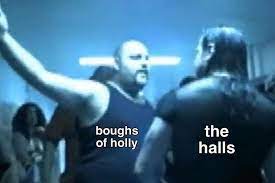 I also started looking at my collections and deciding what I could sell and some of that was because I felt like I was saddling my family with a lot of possessions that they wouldn’t want, and to generate some additional money in case I wasn’t around. I thought of this process as a kind of “reverse nesting.” First on the block was my Samhain box set, which I hadn’t listened to for quite some time. I was also developing a little bit of sensitivity to anything garish or ghoulish, so I was ready to let it go. It was in near-perfect shape, and I knew it would fetch some green on eBay, so I penned an over-the-top product description:
I also started looking at my collections and deciding what I could sell and some of that was because I felt like I was saddling my family with a lot of possessions that they wouldn’t want, and to generate some additional money in case I wasn’t around. I thought of this process as a kind of “reverse nesting.” First on the block was my Samhain box set, which I hadn’t listened to for quite some time. I was also developing a little bit of sensitivity to anything garish or ghoulish, so I was ready to let it go. It was in near-perfect shape, and I knew it would fetch some green on eBay, so I penned an over-the-top product description:
If you’re reading this, you’ve probably been looking for one of these for a long time. And now, here it is. This is an apparently rare Samhain box set from my personal collection. I have watched the VHS a couple of times over the years and listened to the CDs. Let’s call it gently used. The comic book has been tucked behind the liner so my kids wouldn’t find it. I guess it’s a holy grail of sorts for Samhain/Danzig collectors. Just don’t listen to this within the vicinity of Danny Marianino from North Side Kings, because if he catches on, you might be in for some trouble. Payment via PayPal. Shipping will be in a large, flat-rate box from USPS. Enjoy this.
The Samhain set sold very quickly and I got quite a bit more for it than I originally paid. From there, I moved on to my Misfits box set, which was also in terrific shape. They were a favorite in the high school and college years. But Glenn Danzig has revealed himself time and again to be a pompous jerk and I still have plenty of freestanding CDs and 7” records by The Misfits, so I decided I could live without the box set. So, I put that one up, too:
Misfits Coffin Box Set COMPLETE with booklet and pins PLUS three Danzig CDs! You’re preparing to pull the proverbial trigger on the infamous Misfits Box Set with coffin box, booklet, and pin! This is my personal, much loved and gently used edition. I haven’t listened to it in years and while I think the disks are in very good condition, I can’t guarantee that they’re flawless. Nevertheless, this is a deal you won’t find just anywhere. Your parents will be impressed when you pop these disks in the Astrovan CD carousel and you show them that you know all the lyrics to “Rat Fink,” word for word! Organize a four-person a capella performance of “Bullet” at your school. It’s sure to be a crowd-pleaser – especially that last verse (you know which part I’m talking about). Added into this monumental offer are the first three Danzig solo albums so that you can beef up your index of Jim Morrison and Elvis callbacks from Glenn’s early catalog. Buy these before that guy from North Side Kings beats you to the punch! Whether you’re 18 or 85, you’ll be the coolest kid at the Headbanger’s Ball!
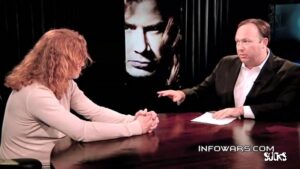
Which one of them is wearing the
“I’m With Stupid” t-shirt?
Once again, that listing yielded a tidy sum. From there, I turned my attention to my Megadeth collection, again mostly because Dave Mustaine has progressively become more intolerable over the course of the past decade or so. I worked that into my eBay listing, as well. The auction lot was actually really big, so I am only sharing the salient parts of my ridiculous listing here:
What we’ve got here is a Megadeth collection of extraordinary magnitude!
Remember when Dave Mustaine gave humorously conceited interviews about how he was better than everyone else, as opposed to the more recent era of his hard-right conspiracy-fueled rants? Remember how Vic Rattlehead used to symbolize everything bad about the military-industrial complex, but now since everything in the world is apparently terrible and sinister, Vic is kind of just like a heavy-metal version of an insurance company mascot? Remember when you double-dated for high school prom and you had to wait in line for dinner because there was a medical emergency in the dining room and while you were passing the time waiting for your table, the other couple talked about how great the video was for “In My Darkest Hour”? Relive all that stuff and make new, scintillating memories with this ultimate Megadeth collection!
These items are from my personal collection. They are most assuredly NOT in mint condition, as they have been played, displayed, read, and well-loved. The Killing Is My Business LP is maybe the crown jewel of this lot, and it has the kind of scuffs and wear that one should expect in a secondhand collection. I think there may have been a price tag on it at some point. Also included here is the Chaos! Cryptic Writings of Megadeth, Necro Premium Edition (She needs premium, dude!). I haven’t listened to many of these albums in some time, and while I am relatively confident that they’re mostly in good shape, I can’t guarantee that everything here plays perfectly. It’ll sure look cool in your collection, man-cave, she-shed, ski lodge, bomb shelter, panic room, or wherever the hell you keep your collectibles. Those two items alone make this lot of stuff a very rare find, indeed. At any rate, just like The Dramatics sang in 1972, “whatcha see is whatcha get.”
It sold easily. I was starting to get on a roll with these auctions and Thomai was starting to get worried that I was going to start parting with some things that I really loved. In fact, I had written a listing for my Hoyer Arrow Flying V guitar as well as a listing for my entire comics collection, which has been painstakingly built and curated for over four decades. But neither of those listings have seen the light of day thus far.
This was an odd time, for sure. Where I typically filled almost every extra minute of my days and evenings with hand-picked selections of music, concert videos, and the like, I spent most of the time staring off into space while sitting in silence or playing old TV reruns in the background.
On April 26, I receive a much-awaited call from my urologist-oncologist in which he went through my pathology and prognosis. It was, as I have noted before, all very encouraging and seems to signal better times are here. I had missed music a lot during this time and I knew that shutting myself off from people and things that I loved had not been helpful. After I took some time to let everything sink in, I decided it was time to revisit some music that I loved and add some new tracks to the soundtrack of my life.
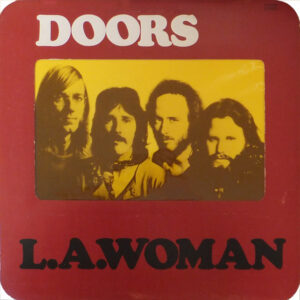
L.A. Woman by The Doors, which features the song “Hyacinth House.”
The first song that I listened to that night was “Hyacinth House” by The Doors. I had been thinking about The Doors for weeks and one night as I was trying to go to sleep, I found myself wondering what it might sound like if Jim Morrison had covered “If It Makes You Happy” by Cheryl Crow (Maybe A.I. will provide us with that experience someday). It was an emotional moment to hear the song once more, but not because I had a special attachment to it; I had simply denied myself the experience of loving music with no information as to whether I might ever get that feeling back. But it did come back. From there, I pulled up the songs “Exceptional” and “Unisonic” by German power metal supergroup Unisonic and I cried through both of those. I finished with Kai Hansen’s Helloween medley from the 2018 Wacken Festival, which is legitimately one of my favorite musical performances ever. It is hard to put into words how good it felt to hear particular riffs, bars, and even individual notes as I returned from my self-imposed isolation. And again, I wept. If you know any of these songs (or if you don’t and you decide to check them out), it might not make sense that they’d move anyone to tears, but that’s exactly what they did for me. At this point, I haven’t mustered the emotional strength to pull out sentimental favorites like Lou Reed’s New York (one of my all-time favorites) or Mutineer by Warren Zevon, or even Puccini’s La bohème, but I know it will be a powerful experience the first time I revisit any of them.
It’s been about six weeks and I’m still listening to old cartoons like Dennis the Menace and Heathcliff during my commute and when I am working at the computer. While I haven’t exactly settled back into the routines and habits that I once had, I’m still getting back into music with a new perspective. I recently pulled out Fabulous Disaster by Exodus, which was a huge deal to me back in 1989, and spent a day last week appreciating the memories that it brought back. I also revisited the offbeat Helloween albums Pink Bubbles Go Ape and Chameleon and appreciated the often underappreciated gens from those records. The podcasting itch has returned and one of these days, Rush Strutter Zep Magik will re-convene for a long-planned review of Let It Be by The Replacements. And later this week, I’ll be attending a live performance of The Lacey Jane Band in Centerville, which features two of my middle school teachers, both of whom were very important in my early appreciation for music. It’ll be a nice way to keep things moving in the right direction and, like Barry Manilow might say, I’m tryin’ to get the feeling again.








